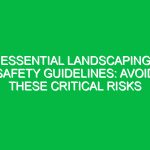“`html
Essential Layering Winter Clothing Guidelines to Stay Safe and Warm
Good morning team! Today, we’re diving into a topic that’s crucial for our Safety and well-being during the winter months: essential layering winter clothing guidelines to stay safe and warm. As temperatures drop, it’s vital that we equip ourselves with the proper clothing to mitigate health risks and maintain comfort while working outdoors or in cold environments. Not only is this important for our health, but it also impacts our productivity and morale. So, let’s get started!
Understanding Essential Layering Winter Clothing Guidelines
When we talk about essential layering winter clothing guidelines, we’re referring to the practice of wearing multiple layers of clothing to protect ourselves from the cold. This layering system is designed to trap body heat while allowing moisture to escape, keeping us warm and dry. Each layer serves a specific purpose:
- Base Layer: This layer is meant to wick moisture away from your skin. It should fit snugly but comfortably to prevent any chill from setting in.
- Insulation Layer: This layer traps heat to keep you warm. It can be made from materials like fleece or wool.
- Outer Layer: Also known as the shell layer, this protects you from wind, rain, and snow. Look for waterproof and breathable materials.
Understanding these layers is essential for Workplace Safety, especially for those of you who work outdoors or in unheated environments. Misconceptions often arise around how much clothing is necessary, leading to inadequate protection against the elements. Remember, being cold can lead to decreased concentration, impaired judgment, and even health issues like frostbite or hypothermia.
Key Hazards, Risks, and Safety Considerations
Now that we understand the layering concept, let’s discuss some of the key hazards associated with inadequate winter clothing:
- Hypothermia: This occurs when your body loses heat faster than it can produce it. Symptoms include shivering, confusion, and fatigue.
- Frostbite: This is the freezing of skin and underlying tissues. It commonly affects fingers, toes, ears, and the nose, leading to permanent damage if untreated.
- Reduced Dexterity: Cold can hinder your ability to use your hands and tools, which increases the risk of accidents.
Ignoring these risks can have severe consequences, not just for your health, but also for Workplace Safety as a whole. It’s crucial to recognize how proper clothing can mitigate these risks.
Best Practices, Procedures, & Actionable Advice
Let’s move on to some Best Practices for dressing appropriately in the winter. Here are actionable steps you can take to ensure you’re adequately prepared:
- Choose the Right Fabrics: Opt for synthetic or wool materials for your base and insulation layers. Avoid cotton as it retains moisture.
- Layer Smart: Start with a moisture-wicking base layer, followed by an insulating layer, and top it off with a waterproof outer shell.
- Stay Dry: If you get wet, change out of damp clothes immediately. Wet clothing can lead to rapid heat loss.
- Wear Appropriate Accessories: Don’t forget gloves, hats, and scarves. These can significantly reduce heat loss from your head, hands, and neck.
- Test Your Gear: Before you head out for the day, ensure your clothing allows for free movement and doesn’t restrict your mobility.
For instance, let’s consider a scenario where a colleague disregarded the layering system and wore only a single heavy coat. By mid-morning, they were soaked through and shivering, leading to a safety hazard not only for themselves but also for the team. This highlights the importance of following the layering guidelines.
Regulations, Standards, and Compliance
It’s important to note that certain Regulations and Standards govern Workplace Safety, especially during the winter months. The Occupational Safety and Health Administration (OSHA) has specific recommendations regarding cold weather safety, which includes:
- Providing adequate Training on recognizing the signs of cold stress.
- Implementing a buddy system to monitor each other’s well-being.
- Ensuring proper clothing and gear are available for all outdoor work activities.
Compliance with these guidelines is not just a legal requirement; it’s a commitment to our collective safety. By adhering to these standards, we protect ourselves and our coworkers from cold-related injuries.
Employee Engagement & Discussion
Now, I’d like to open the floor to you all. What safety challenges have you encountered related to dressing for winter work? Have you ever experienced cold-related issues on the job? Let’s share our experiences and solutions so we can all stay safe and warm this winter.
Conclusion & Key Takeaways
In conclusion, proper layering is essential for staying safe and warm during winter work. Remember the three layers: base, insulation, and outer shell. Choose the right fabrics, stay dry, and always wear accessories to protect your extremities. Compliance with safety regulations is crucial for our safety and well-being.
Let’s prioritize our health by applying these essential layering winter clothing guidelines. Thank you all for your attention today, and let’s keep the conversation going about how we can support each other in staying safe this winter!
“`


